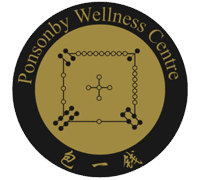Lumbar disc herniation is referred to as “lumbar process”. It is caused by lumbar intervertebral disc degeneration, fibrous ring rupture, nucleus pulposus protruding, backward or into the spinal canal, causing adjacent tissues to be stimulated or oppressed, resulting in lumbago accompanied by radiation pain or (and) numbness in one lower extremity, Lameness (unable to walk), restricted lumbar spine movements, increased abdominal pressure such as coughing, sneezing, and forced defecation, increased pain, cold limbs, and severely weakened muscle strength and muscle atrophy of the affected innervating muscles are a series of Typical clinical symptoms. It often brings a lot of pain to patients’ work, life, body and mind, and even causes disability and incapacity.
I often encounter patients with lumbar sprains clinically. On one occasion, a young lady sprained her waist due to an improper posture, and her left waist was severely painful. After diagnosis, it was found that she had tenderness on both sides of the lumbar vertebrae, but there was no bone injury. It was a pain caused by a simple sprain of the waist. Acupoints such as the hands of three miles, low back pain points, etc., are inserted and twisted to give strong stimulation, and cooperate with back and forth movements of the waist. After 1 minute, the patient noticed a significant increase in the range of motion of the waist and reduced pain. Later, I asked her to lie prone on the treatment bed, insert the conventional acupuncture points on the waist and legs according to the location, and add electroacupuncture continuous waves to the pain area. After the treatment was completed, she felt that most of her symptoms were relieved and healed after 3 consecutive treatments.
In many cases, the effect of acupuncture is related to the word “magic”. Not only is it a gem of traditional Chinese medicine, but Western medicine is also paying more and more attention to acupuncture. Some Internal Medicine published the American College of Physicians’ “Clinical Practice Guide for Noninvasive Treatment of Acute, Subacute and Chronic Low Back Pain”, recommending non-Meds treatment such as acupuncture as first-line therapy. Among them, acupuncture is the only first-line treatment recommended for both acute and chronic low back pain.
In fact, a variety of acute and chronic pain is the dominant diseases of acupuncture, and acupuncture can be said to be the pioneer of this. First of all, its most prominent advantage is that acupuncture can “go directly to the clinic” and directly penetrate the painful area to play an analgesic effect, reduce symptoms, and fundamentally eliminate the cause of pain by acting on muscles and fascia. Take low back pain as an example. Chronic low back pain is often caused by long-term strain. Waist muscles are anxious and ischemic. When cold or improper posture, it can induce muscle spasm and pain. Acupuncture works directly on the joints of muscle tendons, relieves muscle spasm and relieves pain, at the same time promotes local blood circulation, improves the state of muscle anxiety and ischemia, and even achieves immediate results.
Modern research also proves that acupuncture can play both specific and non-specific analgesia through the combination of different acupuncture depths and distal and proximal acupuncture points. In other words, when patients receive acupuncture treatment, they can specifically treat the affected area, and at the same time, they can stimulate their own pain-reducing mechanism and strengthen the curative effect. This is difficult to achieve with other therapies.
There are many types of lumbar diseases. Acupuncture is often effective for non-bone injuries of the waist. For acute low back pain, fractures and slippage should be ruled out and treated as soon as possible, in conjunction with exercise therapy for distal site stimulation. If chronic low back pain is caused by long-term strain, in addition to conventional treatment, warm acupuncture, moxibustion, and rehabilitation can be appropriately added according to other accompanying symptoms. Training, etc

